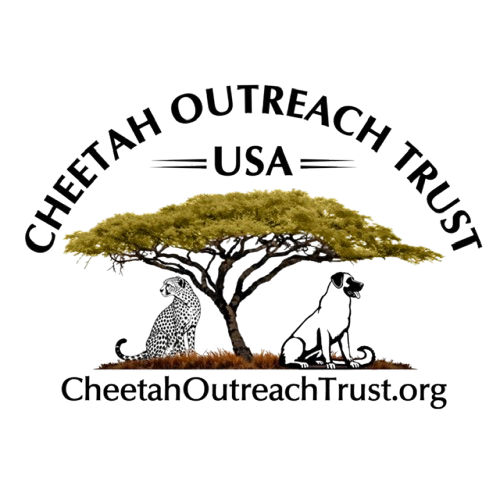About Cheetahs
- Home
- About Cheetahs
Know the Species You're Saving
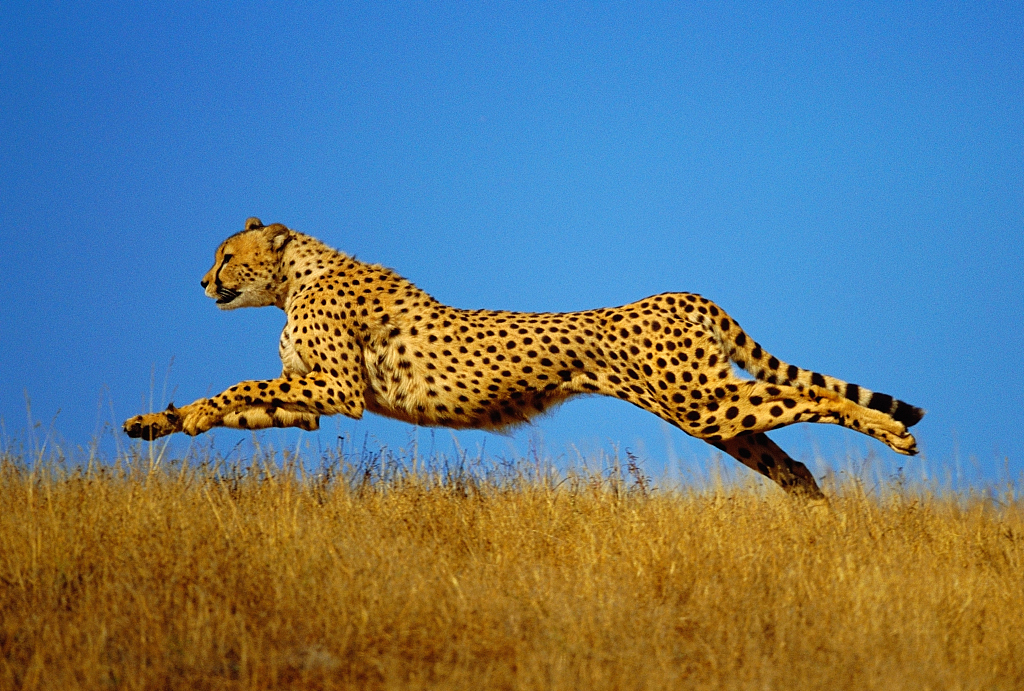
Built for Speed
The cheetah is the fastest land animal and Africa’s most endangered big cat. They can accelerate to about 70 mph in just about 3 seconds, with strides of up to 22 feet at full speed. They complete 4 strides in every second, but can only maintain this speed for 30 seconds. A cheetah’s flexible spine acts like a rudder, providing a powerful burst of acceleration and contributing to its stride length. Their long, powerful legs can stretch almost in line with the rest of their body, and their shoulder blades and hips have a wide range of motion, allowing for massive strides. At two points in each stride, the cheetah is entirely off the ground—once when all four legs are extended and again when they are tucked underneath its body. Cheetah claws are blunt, semi-retractable, and function like running spikes.
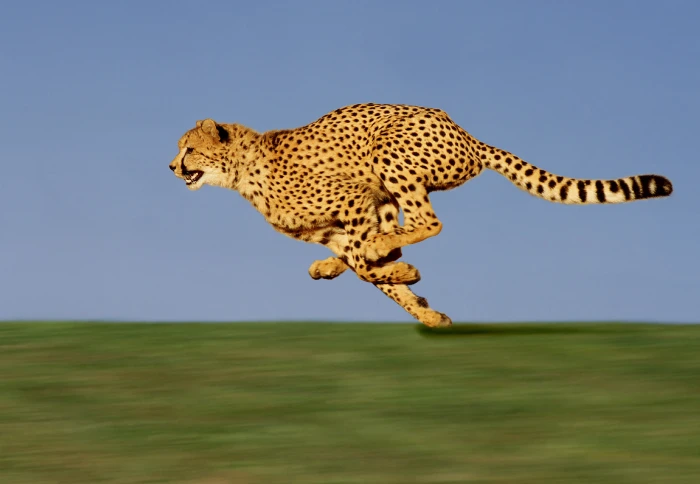
What do Cheetahs eat?
Cheetahs prefer to eat impalas, gazelles and other small to medium antelopes. They will also hunt rodents, birds, hares and sometimes even calves of larger herd animals. Farmers’ livestock is not chosen prey for cheetahs. Anatolian Shepherd guarding dogs, keeping livestock in kraals and other non-lethal protection are highly effective in reducing livestock losses.
The Life of a Cheetah
There are 3 stages in the life of a cheetah. Cub (birth to 8 months), adolescence (18-24 months), and adulthood (24 months and older). Litters are generally 1-6 cubs. Unfortunately, cub mortality is high, especially in areas where lions, hyenas and other predators reside. In South Africa, it is estimated that only 5% of cheetah cubs reach adulthood!
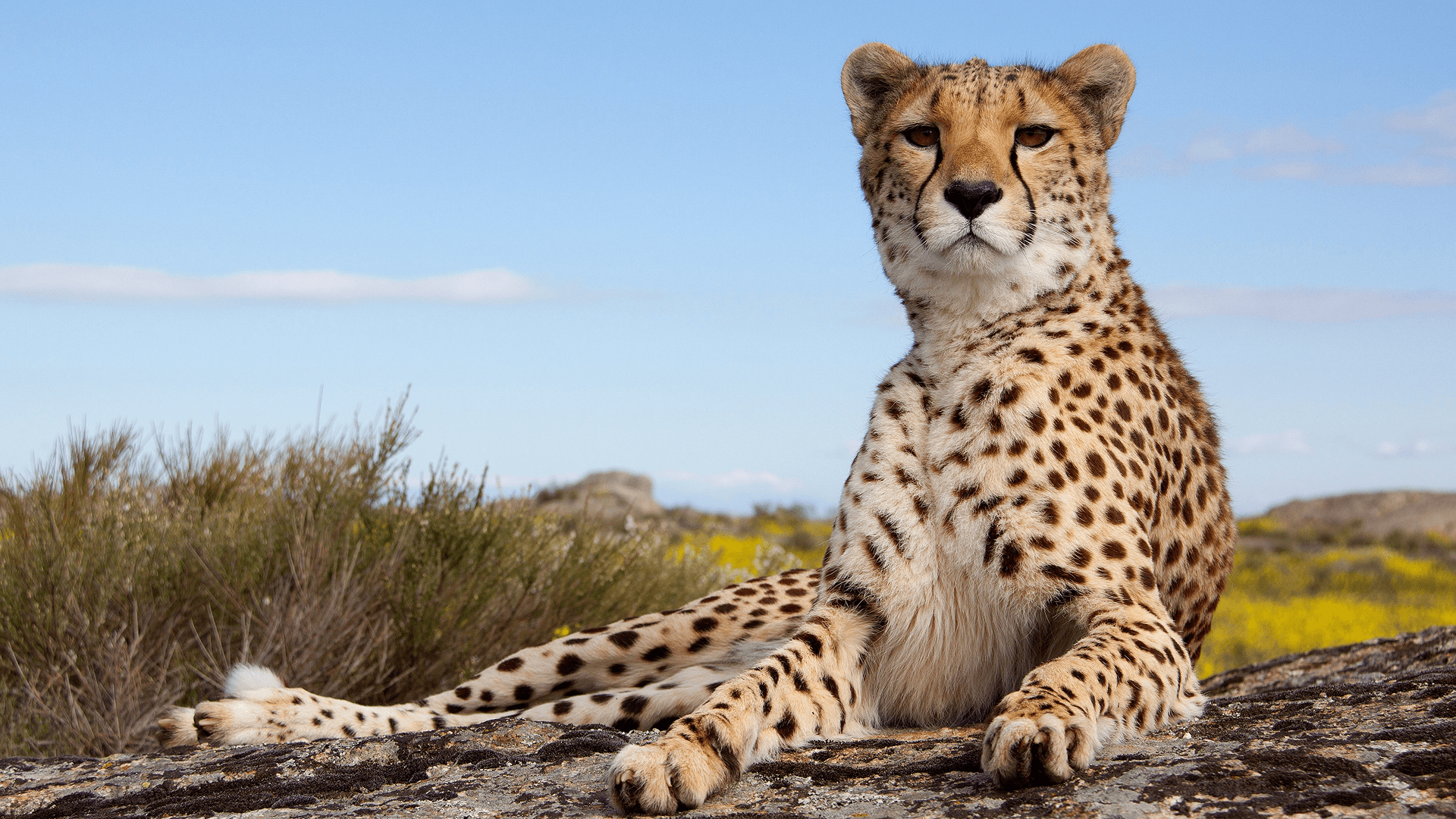
Cheetah Appearance
A cheetah’s coat is light tan to deep gold with solid black spots (not to be confused with rosettes that jaguars and leopards have). Cheetahs also have “tear stripes” between their eyes and mouth which reduce sun glare, much the way athletes use black paint on their faces. A cheetah’s tail is long and bushy with 5-6 black rings, with the bushy tip varying from black to white. Adults typically weigh between 75 and 125 pounds. Their bodies measure 40 to 60 inches from head to hindquarters, with tails adding another 24-32 inches. At the shoulder, cheetahs stand about 28-36 inches tall.
Cheetah Cubs
At birth, cheetah cubs weigh only 8.5 to 15 ounces. Within a day the mother must leave the cubs to hunt, leaving them extremely vulnerable to predators. Cubs begin following mom on daily hunts as they grow. As a result, mom can’t move far or fast. Cub mortality is highest during these months, with less than 1 in 10 surviving. Most losses are due to lions, hyenas, or large birds. At about 18 months of age, mom and cubs separate but adolescent males and females stay together for a few additional months to practice hunting.
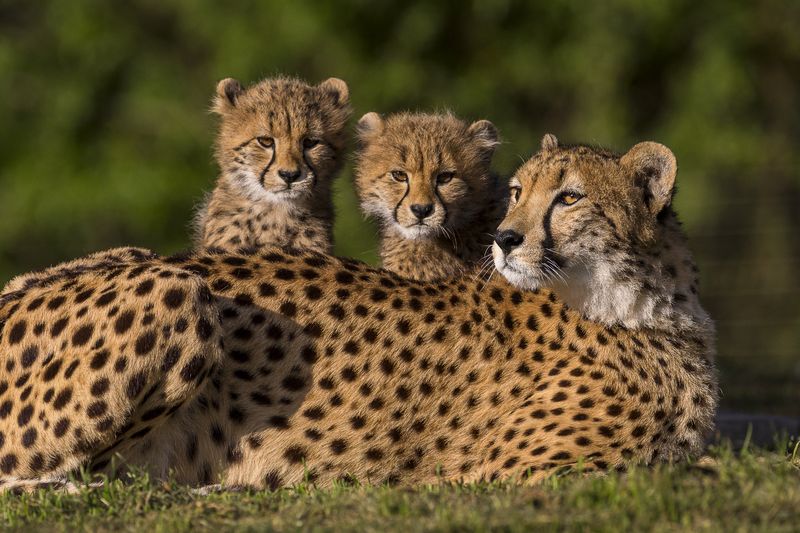
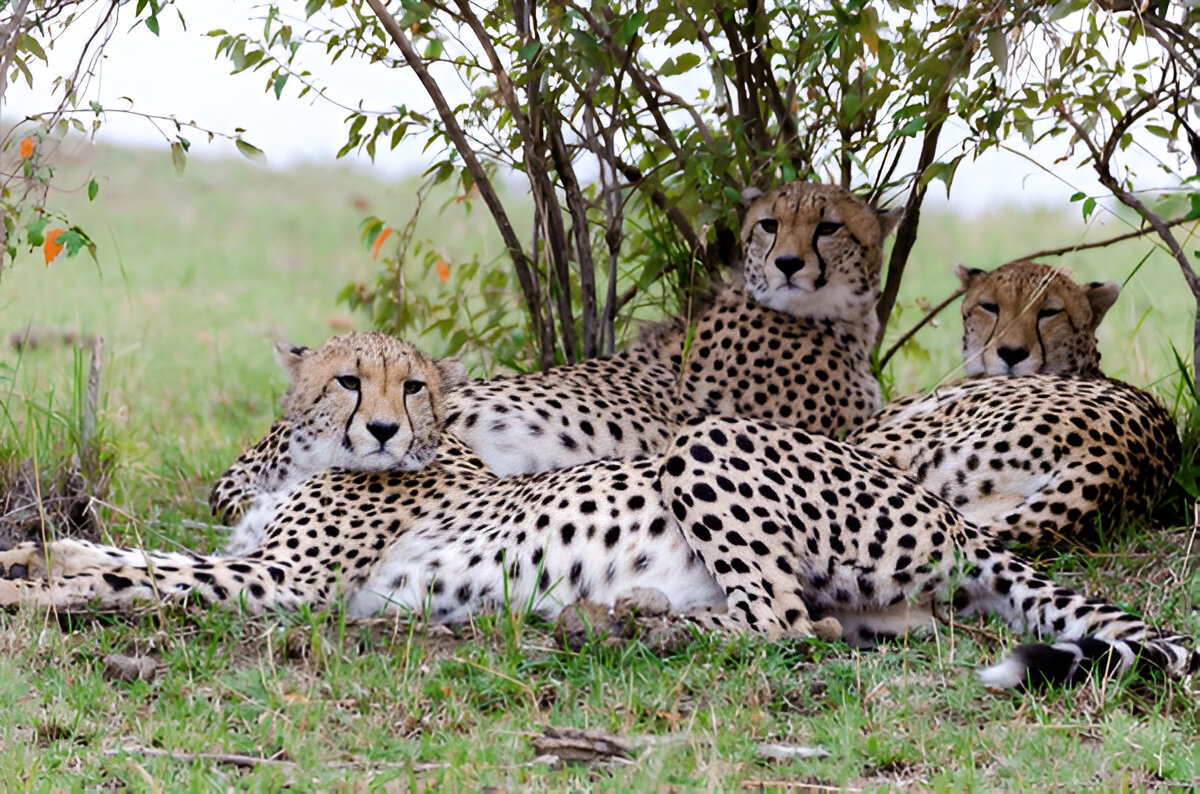
Male Coalitions
Female adults leave the group and lead largely independent lives. However, males remain together in groups called coalitions. Before establishing a territory, they can travel for hundreds of miles, sometimes displaced by stronger coalitions. Eventually, they settle in an area of 15 to 30 square miles.
Hunting
Unlike most big cats, cheetahs are active mainly in the early morning and late afternoon. Their hunting follows a predetermined sequence: detection, stalking, the chase, capturing or tripping the prey, and finally a suffocating bite to the throat to make the kill.
Protected Status
Currently, cheetahs are listed as Vulnerable on the International Union for the Conservation of Nature (IUCN) Red List. In South Africa, cheetahs are protected under the National Environmental Management Biodiversity Act (NEMBA) and the Threatened and Protected Species Act (TOPS). Under the Endangered Species Act in the United States, they are considered Endangered. The Convention on International Trade in Endangered Species (CITES) lists them as an Appendix 1 species. Most wild cheetahs exist in fragmented populations in pockets of Africa, occupying a mere 9 percent of their historic range. In Iran, fewer than 50 Asiatic cheetahs (a sub-species) remain.
The largest single population of cheetahs occupies a six-country polygon that spans Namibia, Botswana, South Africa, Angola, Mozambique and Zambia. More than 75 percent of remaining wild cheetahs live on rural farmlands alongside humans.
